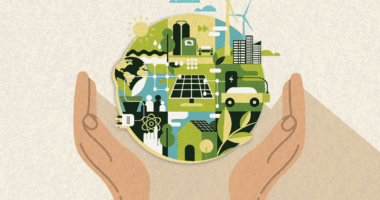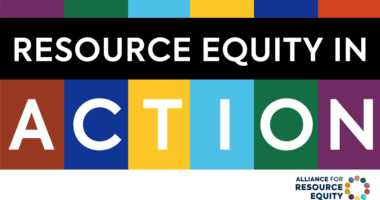Why Education Equity Should Include Climate Justice
Ask a young person about the top issues they care about. Climate change is one of them.
Ask a teacher if they want to teach about climate justice. They do.
Ask a student or parent if they currently see the effects of environmental injustice and climate change in their communities. They do.
Ask young adults if they want more ways to participate in the green economy. The majority do.
Ask an employer if they want to create more green jobs. They do.
Ask a principal if their school closed last year because of an extreme weather event. Hundreds did.
Ask a district leader if they are aware there are unlimited tax credits available to defray the cost of clean energy equipment. They might not.
Students deserve fair and equitable access to safe and nurturing learning environments that provide a high-quality education that prepares them for their futures. They deserve consistent opportunities and pathways to successful higher learning and careers. Everything that students should reap from their education is compromised by the consequences of climate change — and these consequences are greatest for students of color and students from low-income backgrounds, who are already not provided with safe and nurturing environments, representative and rigorous curricula, or consistent opportunities and high-quality pathways to college and career. Children are told from a young age that a good education will take them far in life. But how can they thrive when their future seems bleak, and they don’t know what world they are inheriting?
Historic schooling inequities mirror inequities baked into other areas of public policy, such as housing, job opportunities, transportation, and food security. Students of color and students from low-income backgrounds are much more likely to live in geographies that are polluted by industry, that are more vulnerable to climate hazards, and that have experienced funding inequities related to public infrastructure, including their local schools. They are more likely to experience health issues linked to their environments, such as asthma, that keep them from attending schools regularly. They are more likely to attend classrooms ill-equipped to deal with temperature changes and schools that close due to climate-related events. These have obvious consequences on the consistency of student learning and academic outcomes, and students deserve better. Black and Latino students and students from low-income backgrounds say they want more STEM courses and they pursue STEM careers as ways to make positive differences for their communities and the world.
As climate change worsens and its consequences become more severe, students who understand its causes, effects, and how they can advance climate solutions will be better prepared to tackle the world’s collective future. This means providing students honest climate education that helps them move toward action and hope rather than anxiety and despair. This means providing students career-connected and experiential learning that can lead to skills for green jobs and jobs of the future. Schools that respond directly to students’ climate anxiety and connect students with climate allies and solutions in their community can strengthen student well-being. Early access and exposure to green skills and career pathways in P-12 can open doors to careers that pay a living wage and prepare individuals for quality green jobs. Because of the Inflation Reduction Act (IRA), the largest investment in climate and clean energy in US history, billions of dollars are now available to schools for going green. So, schools can now utilize federal funding to create healthy, climate-resilient, sustainable energy sources for facilities that also are cost effective, which leaves more money to put toward teacher salaries and other student supports. To advance education equity, this work should prioritize communities that are most impacted by climate change and ensure that students and families in those communities are at the center of decisions by districts and schools.
The time for education leaders to become climate leaders is now — because students can’t afford to wait. Their future depends on you.






